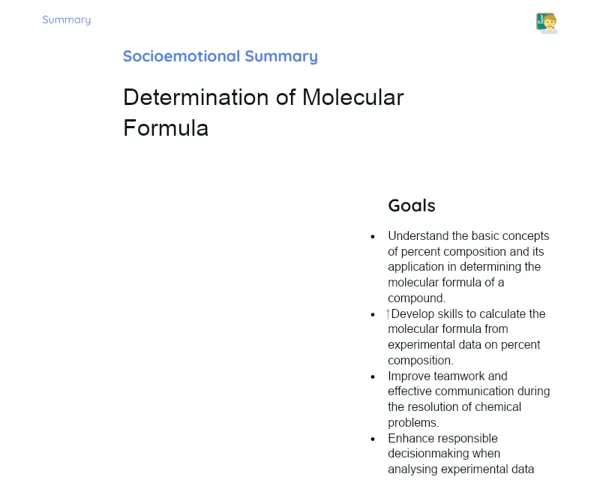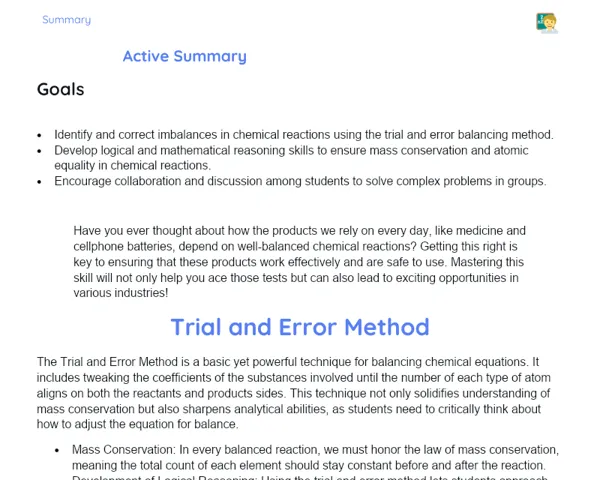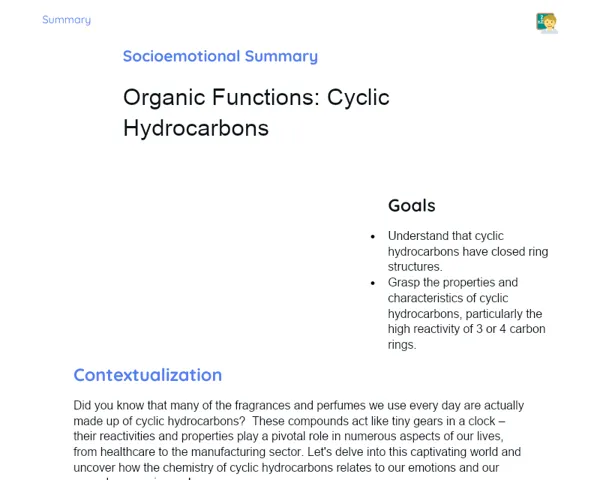Goals
1. Identify organic compounds as acids or bases based on their chemical structures.
2. Classify organic compounds in order of acidity and basicity, using concepts from organic chemistry.
3. Understand the relationship between molecular structure and acid-base properties.
Contextualization
Organic compounds are a part of our everyday lives, present in items we regularly use like medicines, food, and cleaning products. Grasping the acid-base characteristics of these compounds is crucial across various fields, including the pharmaceutical sector, where acidity may affect a medication's effectiveness, and in environmental chemistry, where acidity can impact water and soil health. Understanding these properties allows us to create improved products and solutions for environmental challenges. For instance, the acidity of vinegar comes from acetic acid, while caffeine, found in coffee, acts as a weak base.
Subject Relevance
To Remember!
Definition of Acidity and Basicity in Organic Compounds
Acidity and basicity are properties that describe how a substance behaves in water solutions. In organic compounds, acidity relates to a compound's ability to donate a proton (H+), while basicity relates to its capacity to accept a proton.
-
Acidity: The ability of a compound to donate a proton (H+).
-
Basicity: The ability of a compound to accept a proton (H+).
-
Importance: Essential for understanding chemical reactions and behaviours in solutions.
Molecular Structure and Its Influence on Acidity or Basicity
The molecular structure of organic compounds, particularly the presence of various functional groups, directly affects their acid-base properties. Functional groups like carboxylic acids typically increase acidity, whereas amino groups enhance basicity.
-
Carboxylic Groups: Raise the acidity of compounds.
-
Amino Groups: Enhance the basicity of compounds.
-
Relevance: The molecular structure dictates how compounds behave in different environments.
Comparison of Different Organic Compounds in Terms of Acidity and Basicity
Examining various organic compounds enables a better understanding of their acid-base properties. For example, carboxylic acids are generally more acidic than alcohols and phenols, while amines are weak bases.
-
Carboxylic Acids: More acidic compared to alcohols and phenols.
-
Amines: Weak bases, but more basic than alcohols.
-
Application: Vital for the classification and effective use of compounds across industries.
Practical Applications
-
Drug development: Acidity and basicity can influence how well drugs are absorbed and how effective they are.
-
Food preservation: Managing acidity is key to preventing spoilage and extending product shelf life.
-
Industrial waste treatment: Monitoring acidity is necessary for neutralising hazardous substances and protecting the environment.
Key Terms
-
Acidity: The capacity of a compound to donate a proton (H+).
-
Basicity: The capacity of a compound to accept a proton (H+).
-
Functional Group: A specific arrangement of atoms within a molecule that dictates its characteristic chemical reactions.
-
pH Indicator: A substance that alters colour based on the solution's pH, used to measure acidity or basicity.
Questions for Reflections
-
How does the molecular structure of organic compounds influence their acid-base properties?
-
In what practical situations is the acidity or basicity of an organic compound essential?
-
What environmental ramifications can arise from an imbalance of acidity in water and soil?
Practical Challenge: Testing Acidity and Basicity
In this challenge, learners will test the acidity and basicity of various organic compounds typically found at home using simple pH indicators.
Instructions
-
Gather samples of common household products you suspect have acidic or basic properties (e.g., lemon juice, vinegar, baking soda, soap).
-
Set up small containers for each of these samples.
-
Employ litmus paper strips or another available pH indicator to test the acidity or basicity of each sample.
-
Document the results and compare the acidity and basicity of the tested compounds.
-
Organise the compounds according to their acidity and basicity based on the results obtained.



